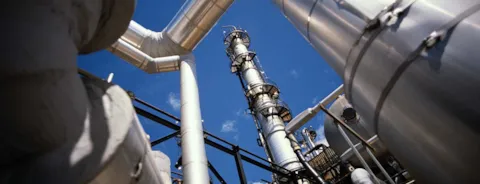Why frequency analysis in QRAs?
QRA provides a structured platform to assessing risk and, more importantly, expresses risks numerically. So, in this context, the main function of QRA is to identify high risk areas and assist in the comparison of design options and the selection of operations philosophies with a view to establishing effective and efficient risk management.
Going back to the basics, risk is typically measured as a combination of frequency and consequence of a specific event.
Risk = Frequency X Consequence
The consequence portion of the equation is generally well-understood. It allows measuring the physical consequence of a leak or a full pipeline rupture that will cause damage to the company’s image, people, property and environment. For example, how many high-cost equipment items would be potentially destroyed if something happens?
But, one question also surfaces from this definition: why is it important to account for the frequency side?
Some regulatory regimes do not account for the frequency (or probability of an occurrence) of events. This results in an incomplete picture of the risk. Without the full quantification of risk, in some situations, analysts may be in danger of allocating scarce resources for little benefit.
For example, the curve below shows the region where effective risk reduction measures can be taken:

Risk Curve
On the left side of the curve the consequences are too small to be identified as high risk – this assessment goes regardless of the probability. This proportion of the events can be captured in a “consequence-based” regulatory regime.
The problem starts when we move to the right of this curve.
On the far right side, the consequences are rated as catastrophic. This could be exemplified by an explosion of a gas that gets confined in region with a large number of equipment items. The overpressure would impact a large area of the process plant. But then again, the probability of this event might be so low that its contribution to the overall risk picture might be very small. This is something that “consequence-based” regulatory regime will not be able to capture. All efforts and resources could be directed to mitigate this problem which is likely to not be contributing much.
The events in the middle of the curve pose an even greater challenge when trying to allocate in a high or low risk area. The reason why this is true is because knowing whether an event is frequent or not will determine the actual risk! Again, this is not captured by “consequence-based” regulatory regime.
In addition to actually being able to capture and rank areas of the high and low risk, this approach allows the analyst to effectively invest in risk reduction measures but concentrating on the events contributing to the peak of the risk curve. The above can be easily aligned with the Risk Matrix like the one below:

Figure 1: Recommended Practice DNV-RP-G101
The bottom line is: if no attempt is made to estimate the chance, we may be driven by the consequence into investing heavily on risk reduction measures which are ineffective.
If you have more questions, you can watch this video. It provides a quick and simple example on the why frequency studies are important.
Authors: Kenny Shaba and Colin Hickey
3/22/2016 10:05:23 AM
